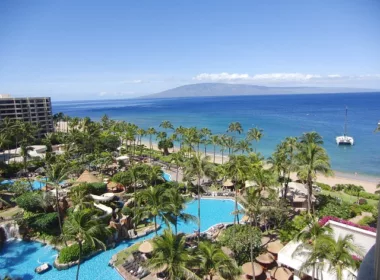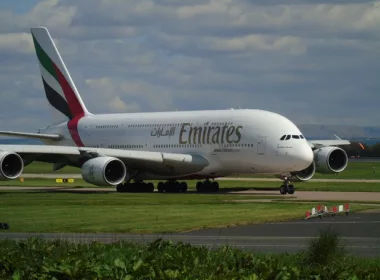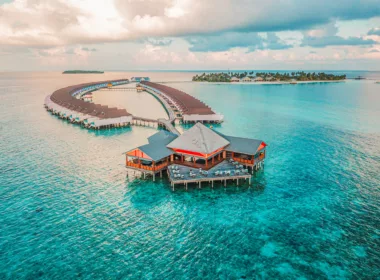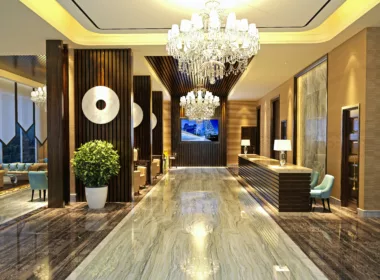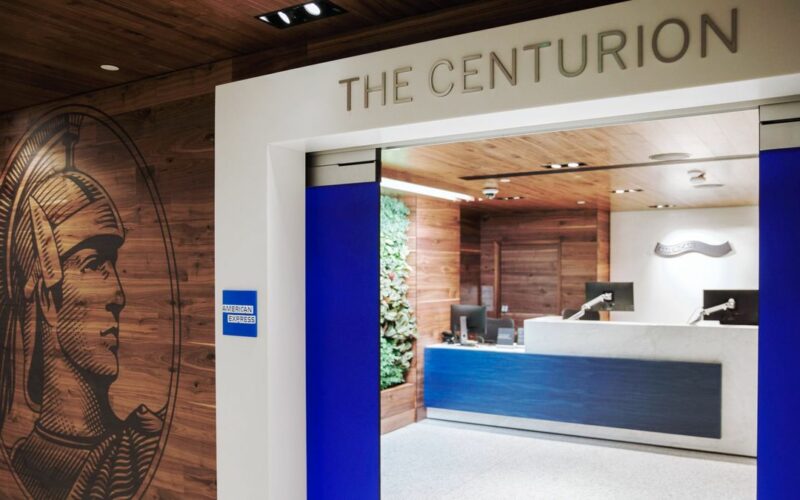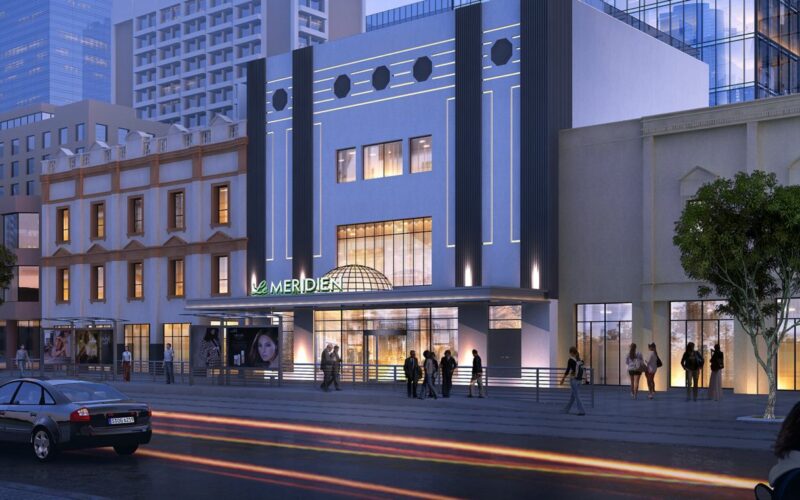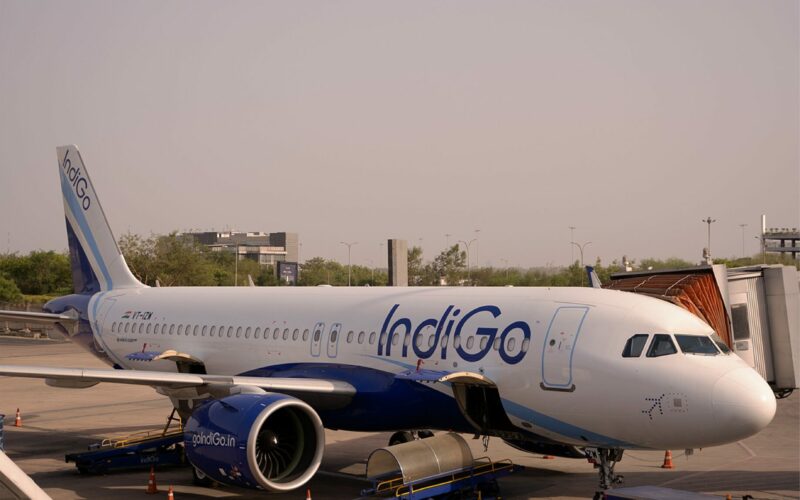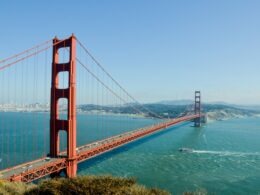American Express is clamping down on the generous guesting policy at its Centurion Lounges to leave more space for its Platinum and Centurion card holders.
From February 1, American Express will axe complimentary guest privileges for most Platinum cardholders and replace it with a charge of US$50 per guest (the current arrangement permits two guests free per visit).
There’ll be an exception made for high-spending customers who notch up US$75,000 per year on their Amex Platinum or Amex Business Platinum Card, and those holding a Corporate Platinum or Centurion card.
(These changes apply to US card holders; Executive Traveller has approached American Express seeking clarification on their impact on Australian card holders.)
But American Express isn’t alone in battling lounge crowds.
Delta bans lounge access for staff and economy flyers
Delta Air Lines last year restricted Sky Club members from entering its lounges until three hours prior to their departure time.
As the beginning of this month it halted the sale of Sky Club memberships to ‘non-elite’ travellers while raising the price for qualifying travellers from US$545 to US$695.
From February 2, many frequent flyers will be barred from Sky Club lounges if they’re booked into economy on international flights, along with Sky Club members on ‘basic economy’ tickets.
But even that’s not enough: US blog View From The Wing reports an internal company communication in which Delta acknowledges the “lines out the door” of their clubs and high-ranking “360 and Diamond Medallion Members waiting for seats once inside.”
As a result, Delta is also banning its own employees from the lounges when they’re flying on company business or a ‘non-revenue’ ticket.
Half a world away, Qatar Airways is easing the squeeze by tapping into the scope of its sprawling Doha hub to open four new lounges in a new wing of the terminal.
This will include what is reportedly the world’s largest business class lounge – the Al Mourjan Lounge North, occupying a staggering 9,000m² (97,000ft², or around 2.2 acres) – plus six lounges dedicated to Silver, Gold and Platinum-grade frequent flyers travelling in economy.
All this might sound like the very definition of a ‘first-world problem’, but airport lounges are becoming increasingly packed as post-pandemic travel surges in wave after unprecedented wave.
Definitely not ‘a good problem to have’
The All Nippon Airways lounge at Tokyo’s Narita International Airport was once an uncrowded refuge of calm for business travelers, favored for such perks as free made-to-order noodles, a private shower, and comfy chairs with views of the tarmac and planes taxiing.
But on a recent Tuesday afternoon while connecting flights at the busy airport, Paige Emerich, a United Airlines frequent flyer, had to circle through the lounge several times before she could even find a seat.
“It was packed, packed, packed,” she says. “I’m still trying to be socially distanced, but there’s no social distancing in there right now.”
AD
Emerich’s experience isn’t unique. Business class lounges around the world can be standing room-only as corporate road warriors get back on planes, affluent flyers treat themselves to no-expense-spared holidays, and regular travelers pay for lounge memberships or premium credit cards that offer access to escape the hustle and bustle of airport departure halls.
The packed lounges come at a critical time for airlines. After almost two years of virtually no international travel, they’re looking to revive earnings and trim losses with sky-high airfares.
Disappointing their most valuable and revenue-generating premium passengers with poor service is something they can ill afford.
There are numerous reasons business class lounges – which almost always offer goodies including free Champagne, wine, spirits, quality nibbles and Internet access – are more crowded than usual.
Once the preserve of first and business class passengers or loyal frequent flyer program members with elite status, many lounges are also available to other travelers through paid access.
Meanwhile, premium credit cards such as American Express also offer lounge access as a benefit to some customers.
Premium pressure points
The recent jump in the number of delayed and canceled flights has also caused more travelers to spend longer times in these once-exclusive enclaves. Lingering Covid-19 curbs have left some traditionally busy aviation hubs – Hong Kong, for instance – largely off limits, funneling more travelers through alternatives such as Singapore or Tokyo.
And some lounges simply haven’t reopened since the pandemic, boosting crowding at those that are.
AD
The explosion in demand has made it almost impossible for airport lounges to increase their overall footprint in response, says David Flynn, editor in chief of Executive Traveller, a website focused on premium travel.
Waves of people who’ve held off on traveling are now ready to fly, and we’re going to see “more making a beeline for the airport lounge,” Flynn says.
“Frequent flyers have especially been coming back in droves, and their status in airline loyalty programs gives them access to business class lounges even when they’re booked in economy or premium economy class. This adds to the overall capacity pressure on lounges.”
Business and first class – which include lounge access in the ticket – have also exploded in popularity.
“Travellers have moved from stockpiling points to spending them. Flynn recounts.
“They’re finally cashing in all those frequent flyer points and miles they’ve earned on the ground during the pandemic – through everyday spending and online shopping – but haven’t had the chance to use.”
“Now they’re splurging on long-awaited trips, and often doing so in business class, where lounge access is part of the package.”
Loyalty at risk
Last month, Stephen Dorrough was traveling from Salt Lake City to Tokyo on business.
AD
While connecting at Los Angeles International Airport, he visited both United Airlines’ Polaris lounge, available to first and business class travelers on long-haul trips, and the Club lounge.
The latter was less busy than the more exclusive Polaris one, he says.
“The lounge experience of seven or eight years ago has changed,” says Dorrough. “It’s not so relaxing because there are lots of people around.”
It’s unlikely the overcrowding will end soon. Travel operators from TUI, the world’s biggest package tour operator, to British online travel agent Thomas Cook Group report demand that’s above pre-pandemic levels.
Europe’s travel industry continues to see bumper sales, despite average travel prices being above pre-pandemic levels.
At a time when many full-service carriers are counting on premium and business travelers to buoy profits, perks that disappoint can risk alienating these prime customers.
“If business lounges are constantly overcrowded and you don’t get the service you expect as a frequent traveler, you’ll be less loyal, which is the object of the lounge – to spur loyalty,” says George Ferguson, a senior analyst at Bloomberg Intelligence.
Additional reporting by Executive Traveller
